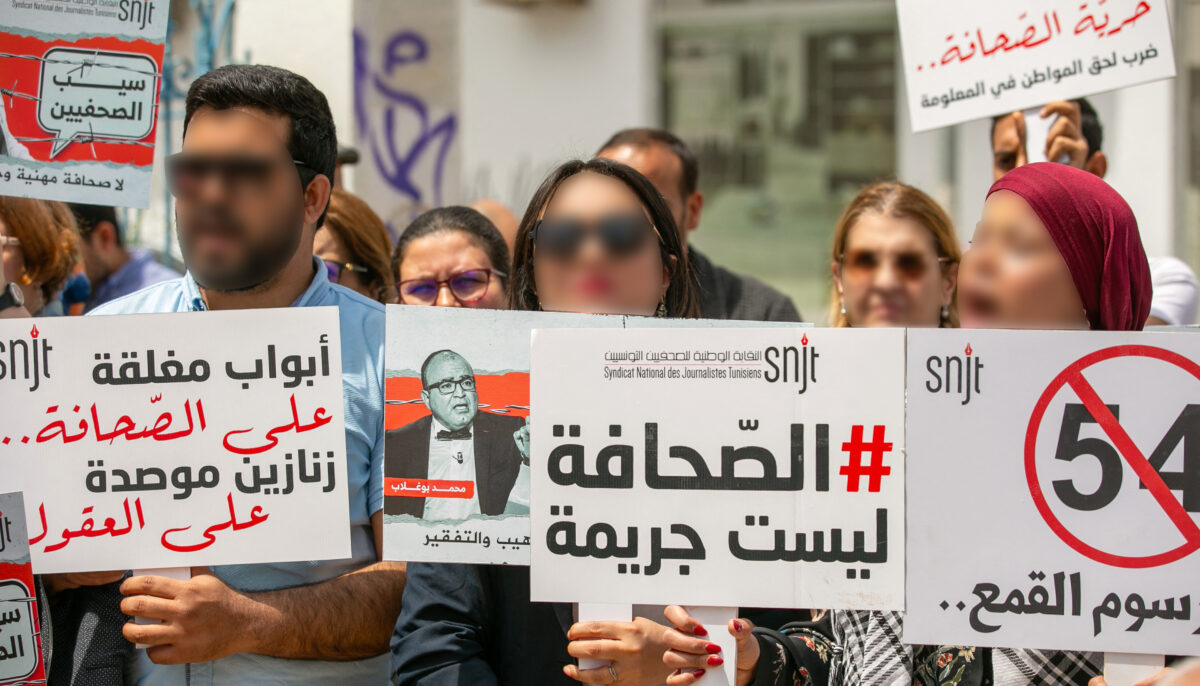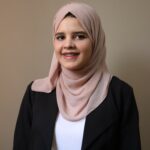The 2024 “World Press Freedom Index” (WPF Index), issued by Reporters Without Borders (RSF) on World Press Freedom Day on May 3, 2024, confirmed that political authorities threaten rather than protect the freedom of the press.
The index ranked 180 countries and regions worldwide and explored certain restrictions on the right to access information and freedom of expression. It also examined harmful practices targeting journalists and legislation that restricts the work of independent media.
This Index represents a useful reference and database for monitoring the challenges of press freedom. It also allows for comparing country rankings or even rankings recorded by one country over the years.
It also allows us to observe the impact of ruling regimes and political conditions on press freedom. These implications go beyond just an increase or decline in ranking, as the global or domestic situation cannot be reduced to a number, percentage, or general description like “difficult,” “problematic,” or “good.”
How, then, can we understand the “World Press Freedom Index” from a critical perspective? How can we reflect on the methodology adopted by the Index to allow journalists and researchers to question the rankings and their representation of reality?
WPFI designates the Middle East – North Africa region as a “Red Zone”
In 2024, the WPF Index indicated a decline of 7.6 points on the political index, one of the five leading indicators. The ranking coincided with elections, wars, political struggle, and the absence of the international community and its role in safeguarding the protection of journalists.
RSF’s editorial director, Anne Bocandé, stated that “countries and political powers, regardless of their orientations and beliefs, have become reluctant to carry out their role in protecting press freedom.”
In 2024, the Index classified the Middle East – North Africa region as the most dangerous for journalists globally, as “journalism is suffocating under the weight of authoritarian regimes.”
Mauritania (33), Comoros (71), Qatar (84), and Tunisia (118) occupied the first four (i.e., best) rankings among Arab countries, achieving results similar to those in the 2023 report.
Saudi Arabia (166), Iraq (169), Egypt (170), Bahrain (173), and Syria (179) ranked last among Arab countries. This classification was very similar to last year’s.
However, Egypt fell back six ranks while Tunisia recorded a relative improvement despite the exceptional political circumstances imposed by President Kais Said since June 2021. These circumstances led to a decline in press freedom in the country after the dissolution of the Parliament and the arrest of the opposition.
Libya and Djibouti remained steady in their ranking, while Kuwait, Oman, Morocco, and Jordan’s indicators improved by no more than 14 points from last year.
The report says that the improvement in the political index of Morocco is due to a lack of new arrests and does not mean that the repression of journalists through lawsuits and prosecution has decreased.
The RSF correspondent in Amman, Mohammed Shamma, said that “Jordanian media’s celebration of the country’s 14-point improvement in RSF’s ‘World Press Freedom Index’ is comic.”
“Progress is a misleading word; there is no progress. There is only competition over rock-bottom.”
Over the past year, dozens of journalists have been arrested in Jordan for participating in pro-Palestine protests, accompanied by the adoption of a new restrictive version of the Cybercrime law. Interestingly, Sudan and Palestine recorded only a one-point decline compared to 2023, despite the wars that made the work of journalists very difficult.
For instance, the Israeli occupation had killed more than 100 journalists in the Gaza Strip alone, 22 of whom were killed while on duty.
RSF has warned that freedom of the press is on the brink in war-torn Sudan, and Palestine has become among the bottom ten countries in terms of journalist safety and security.
The killing and targeting of Palestinian journalists have reflected negatively on Israel, which ranked 101 and lost its position as “a leading country in press freedom in the region.” The press freedom situation in Occupied Palestine was described as “difficult” in 2024 after it had been “problematic” in 2023.
In Gaza and the West Bank, restrictions on the press continued to be on the rise. One month after the October 7 military operation, the RSF reported that the Israeli occupation had arrested around 15 Palestinian journalists in the West Bank while it detained and interrogated seven others for several hours at military checkpoints before releasing them.
Somalia’s ranking fell by four points compared to last year, and the United Arab Emirates and Lebanon witnessed declines of at least 15 points each compared to 2023.
According to the SKeyes Center for Media and Cultural Freedom, freedom of expression monitor in Lebanon, protection of this right has been declining in Lebanon.
In particular, journalists and activists are being summoned, lawsuits against journalists are being filed, and serious investigations concerning journalist assassinations are absent from the scene. This was also accompanied by the targeting and the killing of three Lebanese journalists in an Israeli bombing.
SMEX previously covered the Decision of the Beirut Bar Association regarding the regulation of lawyers’ relationship with media outlets and the conviction of media personnel in defamation lawsuits, a practice that restricts freedom of expression.
“Last year, Lebanon saw many attacks against the LGBTQ+ community and Syrian refugees, as well as the media that tried to cover their stories objectively,” explained Mohamad Najem, SMEX Executive Director.
What are the implications?
The WPF Index compares the degree of freedom granted to journalists and media outlets in the 180 participating countries.
The Index adopts the following definition of press freedom: “The ability of journalists as individuals and collectives to select, produce, and disseminate news in the public interest independent of political, economic, legal, and social interference and in the absence of threats to their physical and mental safety.”
This definition does not specify whether it applies only to officially registered journalists or bloggers, journalism amateurs, or practitioners as well.
It is also worth noting that the RSF Report lists the names of the experts who prepared the report, but the majority of these experts, if not all of them, are not from the Arab region.
The WPF Index revolves around five leading indicators: political context, legal framework, economic context, sociocultural context, and security context.
Each indicator entails a subset of questions, which RSF considers a “mirror of the countries’ realities throughout the reporting year.”
The Index assigns a quantitative score to each country that calculates violations committed against journalists and media personnel, and a qualitative analysis that measures the degree of freedom through a questionnaire directed at specialized experts.
In an interview with SMEX, an editor in the Jordanian Media Credibility Monitor, “Akeed,” Ola Al-Qarisli, explained that “understanding a country’s global ranking is linked to understanding its position in the sub-indicators.”
“For example, it is true that Jordan improved in the economic, socio-cultural, and security indicators, but it digressed by one point in the legislative indicator and 16 points in the political indicator.”
According to the report, the “decline in the political indicator implies more red flags and censorship on specific topics related to war, corruption, financial crimes, economic crises, the status of women, the issue of immigrants, and issues related to ethnic groups and minorities.”
According to Al-Qarisli, the five sub-indicators represent several factors that affect the journalists’ work, but they should not hold the same weight in ranking and classification.
Challenges caused by the political indicator, peace, or security, are more serious than the implications of the cultural factor. Moreover, certain events and circumstances are relevant to more than one indicator.
She goes on to explain that Jordan fell back one point in the legal or legislative indicator because of the adoption of the Cybercrime Law, which further restricts freedoms. However, the Index did not clarify whether law adoption is weighted at one point, and not two for instance, especially since Jordan has enacted, since 2012, several other restrictive laws, such as the Press and Publications Law.
Several governmental and semi-governmental media outlets in the Arab region have used the figures within the Index to glorify the margins of freedom they allow, ignoring the restrictive challenges and legislations that lead to journalist persecution.
Simply extracting a country’s ranking without examining the context and sub-indicators often yields misleading interpretations.
Al-Qarisli also clarified that the WPF Index should be looked at objectively while analyzing the countries and the implications of their rankings and developing proposals that help tackle the identified challenges.
“It is useful, for example, to compare the scores assigned to one country last year with those it received this year, in order to understand progress or digression, and compare the scores to global factors, examine reasons for digression, and try to find ways to contribute to improving press freedom.”
An anonymous Egyptian journalist told SMEX that “such rankings can be used to serve specific political ideologies.”
He emphasized that although Mauritania and Comoros were top-ranked among Arab countries, this is not necessarily an indication of development and advancement of freedom of the press in them as much as it is an indicator of the complete absence of the press in both countries.
The Index’s methodology does not account for such a context. He adds that understanding press freedom in a country is linked to understanding other local issues that may not be related to journalism.
Under the political indicator, for instance, the Index measures “the extent of support that the media receives to carry out its role,” but a true understanding of support requires a thorough examination of the legislation behind registering associations, licensing websites, and receiving funding.
The WPF Index provides a comprehensive map of political, economic, and security situations in countries around the world. Researchers and journalists often refer to it in their content and studies.
Since the media and political scene in our region are rapidly changing, it is important to update such classifications and indices regularly and account for the regional context.
The concerned research organizations must incorporate qualitative methods that are more representative of countries’ realities and their challenges rather than focusing on purely quantitative criteria and mathematical equations that might be far off from the practical scene.
Finally, researchers and journalists are responsible for how they respond to such indices and classifications. They should see these as part of a broader analysis that would clarify the strengths and weaknesses and help uplift freedom of expression.
Image from AFP.



